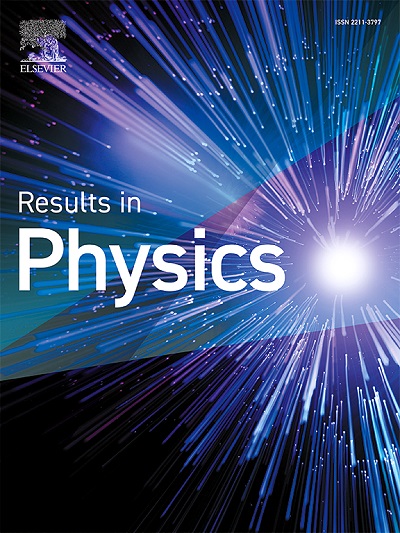Novel hafnium oxide doped G-T-B Glass: Structural, physical, mechanical, optical, and radiation shielding investigation
IF 4.4
2区 物理与天体物理
Q2 MATERIALS SCIENCE, MULTIDISCIPLINARY
引用次数: 0
Abstract
Three glasses were fabricated using a common melting and annealing process. Hafnium oxide-doped tellurite germanate borate glasses have been investigated for radiation shielding. A series of three glasses with the formula of (35-x) B2O3-20TeO2-10GeO2-35MgO-xHfO2 (x = 1.25, 2.5, and 3.75 mol%). X-ray diffraction (XRD) pattern investigated the glassy phase of the samples. The Makishima-Mackenzie model was employed to evaluate the mechanical features of synthetic glasses. The dissociation energy (Gt) and packing density (Vt) are determined using the related formulas. The optical features of the manufactured glasses were determined using a number of formulas and the UV absorption edge. The energy band gap (Eg) was found using the Mott and Davis relation. The refractive index and Urbach energy (EU) were computed using the related relationships. Many optical features, like metallization (M), transmission (T), reflection loss (R), optical basicity (Λ), optical polarizability (α0), and optical electronegativity (χ), were computed and reported in this work. Monte Carlo simulation was employed to investigate the gamma-ray shielding parameters over an energy interval that extends from 0.015 MeV to 10 MeV. The increase in HfO2 content within the concentration rage of 1.25–3.75 mol% increases the linear attenuation coefficient of the prepared glasses across the ranges of 107.510–134.277 cm−1 (at 0.015 MeV) 1.282–1.593 cm−1 (at 0.15 MeV), and 0.183–0.191 cm−1 (at 1.5 MeV). The increase in HfO2 concentrations is also accompanied by a decrease in the half-value thickness, thickness equivalent lead, and the transmission factor for the synthesized glass samples.
求助全文
约1分钟内获得全文
求助全文
来源期刊

Results in Physics
MATERIALS SCIENCE, MULTIDISCIPLINARYPHYSIC-PHYSICS, MULTIDISCIPLINARY
CiteScore
8.70
自引率
9.40%
发文量
754
审稿时长
50 days
期刊介绍:
Results in Physics is an open access journal offering authors the opportunity to publish in all fundamental and interdisciplinary areas of physics, materials science, and applied physics. Papers of a theoretical, computational, and experimental nature are all welcome. Results in Physics accepts papers that are scientifically sound, technically correct and provide valuable new knowledge to the physics community. Topics such as three-dimensional flow and magnetohydrodynamics are not within the scope of Results in Physics.
Results in Physics welcomes three types of papers:
1. Full research papers
2. Microarticles: very short papers, no longer than two pages. They may consist of a single, but well-described piece of information, such as:
- Data and/or a plot plus a description
- Description of a new method or instrumentation
- Negative results
- Concept or design study
3. Letters to the Editor: Letters discussing a recent article published in Results in Physics are welcome. These are objective, constructive, or educational critiques of papers published in Results in Physics. Accepted letters will be sent to the author of the original paper for a response. Each letter and response is published together. Letters should be received within 8 weeks of the article''s publication. They should not exceed 750 words of text and 10 references.
 求助内容:
求助内容: 应助结果提醒方式:
应助结果提醒方式:


